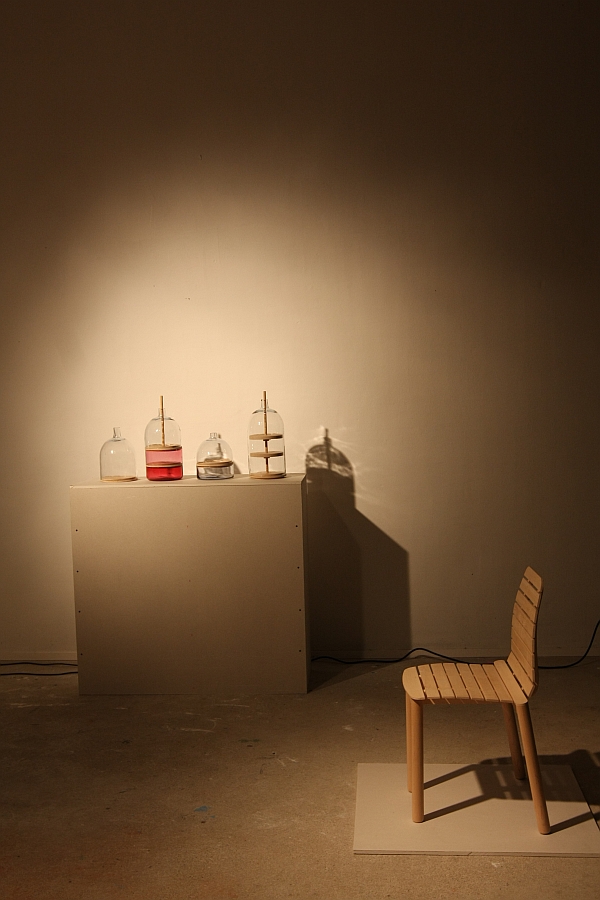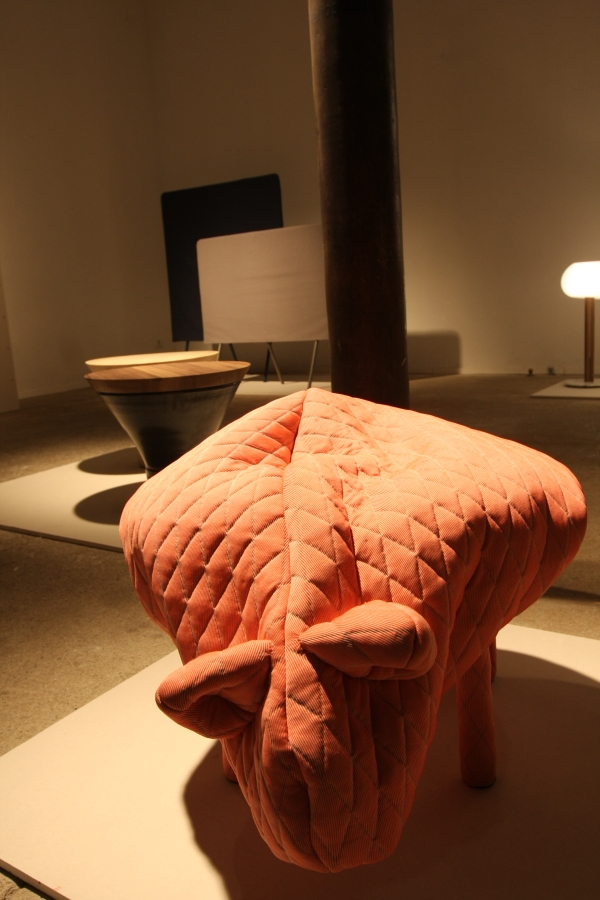"Do the books that writers don't write matter?", asks Julian Barnes in his 1984 novel Flaubert's Parrot.
In a similar vein, do the posts that bloggers don't write matter?
Among Julian Barnes' arguments for not disregarding the unwritten novel is that, "Besides, an idea isn't always abandoned because it fails some quality control test. The imagination doesn't crop annually like a reliable fruit tree. The writer has to gather whatever's there: sometimes too much, sometimes too little, sometimes nothing at all"
Our fruit trees are design weeks and design fairs, which have a tendency to overburden us with ripe material. Consequently we regularly - always? - return from such with more than we can ever hope to publish. And so one or the other excellent, desired, project inevitably falls by the wayside.
One such is/was the exhibition "Objects for the Neighbour" presented at Cologne Design Week 2013.
And so somewhat later than planned....
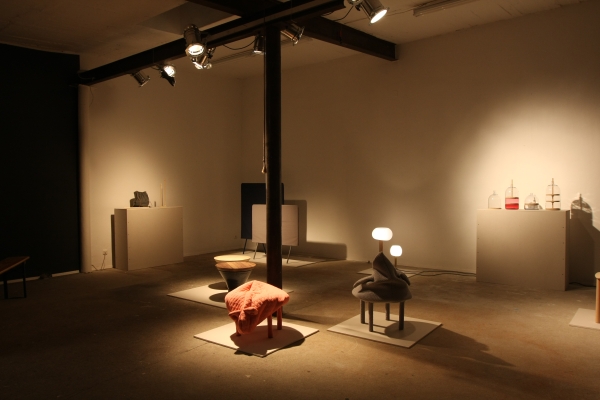
Instigated by Karoline Fesser, Kai Linke and Thomas Schnur, "Objects for the Neighbour" was presented as part of the Passagen Design Festival during Cologne Design Week 2013 and asked the participating designers to develop an object inspired by the theme "neighbours."
The background idea being as simple as the exhibition concept, "Everyone has a neighbour" begins Karoline Fesser, "and it is a theme that leaves a lot of space in which to manoeuvre, to allow each individual designer to tackle the theme as they want and in their way"
For "Objects for the Neighbour" eight designers tackled the theme, the initial three designers inviting a further five to contribute. The results being as heterogeneous as any good neighbourhood.
Thomas Schnur's screen/divider/opener Barrier and Karoline Fesser's Sample Avenue collection have already had a mention in these pages in the context of their joint Contrast show at Salone Satellite during Milan Design Week 2013. And so, with excuses to both, we'll skip over them here.
Wiesbaden based Sarah Böttger was represented by the collection Common Things, a collection of objects that reflect the reality of life on a shared stair: a door stopper, a broom and a dustpan with bag. Objects that neighbours need in equal measure, or which seen from another perspective, no one really needs in equal measure. But which everyone has. From the collection Sarah has subsequently developed the door stopper into a delightful object in its own right. Proving, if proof were needed, that a life of common coexistence needn't be forever.
A theme continued by Florian Hauswirth with his somewhat melancholic (T)HERE: an object that in its dissociability tells the tale of a relationship that was once ssssooooo good. Once.
Composed of two clocks created from one piece of wood, (T)HERE can be used as a single item, symbolising unity in a relationship; however, separated each party can take a piece with them. Something which needn't be negative. When, for example, two friends, or neighbours, go their separate ways each can take a piece of the object and has as such a permanent reminder of the other. Of the good days.
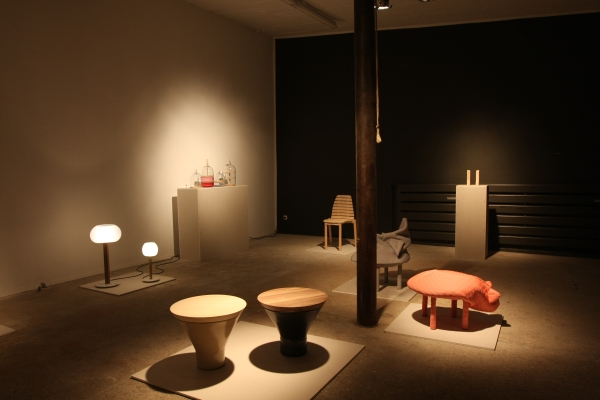
Brussels based Julien Renault had often seen his widowed neighbour sitting on a bench in a local park, and subsequently felt inspired to translate the form of the public benches found in the Belgian capital into an object for use in the home. The comfort of community in the privacy of our own four walls. The result is and was Park Chair, a delightful, slatted, maple chair that genuinely impressed us with its very self-confident form language.
What a widower misses most of course, is someone waiting for them when they return home. With her Petstool series Frankfurt based Hanna Ernsting has created objects that can be seen as a replacement for such. On the surface Petstools is a series of stools in cartoon animal optic, the beauty of the dumb companions comes when you allow your feet to sink into the soft material. The effect is just as if a household pet, or a partner, is gently massaging your feet after a hard day in the uncaring world.
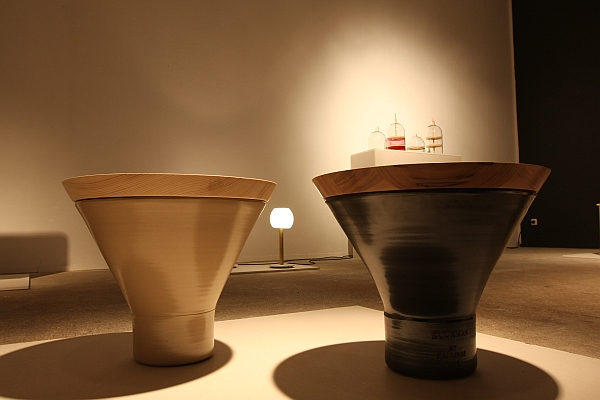
Local inspiration served Frankfurt based Kai Linke for his Buurman series. On the one hand the classic preserving jars of his native region - simply because his former and current neighbours were/are keen fruit preservers. And on the other, the stoneware Bembel's traditionally used to serve the Apple Wine so beloved in Frankfurt and environs. Kai's aim was to create an object that could not only be used for storage, but also as a side table. Which neatly describes Buurman with its stoneware body and turned wood lid/top.
Last but not least, Kassel based Hanna Krüger was inspired by Oskar Schlemmer's triadic ballet for her Figurines series of lamps, in that they represent various forms, the aesthetic if you will, of the human body. Created from mouth blown glass combined with brass, marble, aluminium and wood, the individual beauty of the Figurines collection arises through the fact that the glass is blown directly, in situ, on the stand. A process that leaves little room for exact planning. And a lot of room for chance and fate.
Much like the way we become neighbours.
And in that sense, the joyous aspect of Objects for the Neighbour for us was that all projects dealt positively with neighbours. No one created anything negative. Anything that implied neighbours might not be something other than reason for celebration. Even Thomas Schnur's Barrier must be seen as a positive object in the sense of "Good walls make good neighbours".
And certainly better neighbours than Gustave Flaubert and his (stuffed) parrot, a bird who after three weeks standing on his desk moved Flaubert to write, "The sight of it is beginning to irritate me."
Full details on Objects for the Neighbour and the individual projects can be found at http://objectsfortheneighbour.com
And should they return in 2014, we promise to be somewhat quicker with our post......
